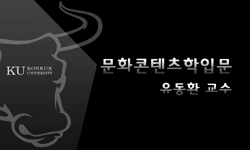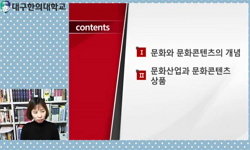This thesis aims to analyze the lylics of the Japga Yukjabaegi, which was widely enjoyed by the public in the early modern times, and to read off social and cultural history of the time. All of printed Japga collections and gramophone records of the t...
http://chineseinput.net/에서 pinyin(병음)방식으로 중국어를 변환할 수 있습니다.
변환된 중국어를 복사하여 사용하시면 됩니다.
- 中文 을 입력하시려면 zhongwen을 입력하시고 space를누르시면됩니다.
- 北京 을 입력하시려면 beijing을 입력하시고 space를 누르시면 됩니다.

잡가 <육자배기> 노랫말의 다양성과 변이 연구 - 콘텐츠로 소비된 근대 대중가요 잡가 노랫말의 한 형태 - = A Study on the Diversity and Variations of the Song Lyrics of the Miscellaneous Song <Yukjabaegi> - A form of modern pop songs consumed as contents -
한글로보기https://www.riss.kr/link?id=A108498435
-
저자
김지혜 (한성대학교)

- 발행기관
- 학술지명
- 권호사항
-
발행연도
2023
-
작성언어
Korean
-
주제어
잡가 ; 육자배기 ; 콘텐츠 ; 노랫말 ; 근대 ; 사회문화 ; Japga ; Yukjabaegi ; Contents ; lyrics ; modern times ; Social culture
-
등재정보
KCI등재
-
자료형태
학술저널
-
수록면
229-255(27쪽)
- 제공처
-
0
상세조회 -
0
다운로드
부가정보
다국어 초록 (Multilingual Abstract)
This thesis aims to analyze the lylics of the Japga Yukjabaegi, which was widely enjoyed by the public in the early modern times, and to read off social and cultural history of the time. All of printed Japga collections and gramophone records of the time, where the lyrics of the Japgas were contained, were reviewed in order to find out those of the Japga Yukjabaegi, which was enjoyed in the first half of the 20th century, and as a result, it was possible to find a total of fifty-one Yukjabaegi lyrics consisting of thirty-six ones from the printed Japga collections and fifteen ones from the gramophone records. In addition, the fifty-one Yukjabaegi lyrics were analyzed after classifying them into three types according to their content and aspects.
First type is the Yukjabaegi influenced by traditional folk songs and is characterized by containing trace of the Jeolla-do folk song Yukjabaegi, which became a prototype of the Japga Yukjabaegi, in its lyrics. Thirteen Yukjabaegi lyrics fall into this type and are only found in the printed Japga collections. Second type is the popular Yukjabaegi of the time and is characterized by largely adopting lyrics from other popular Japgas of the time. Fifteen lyrics fall into this type and are only found in the printed Japga collections. Third type is the created Yukjabaegi, and a total of twenty-three lyrics consisting of eight ones from the printed Japga collections and fifteen ones from the gramophone records fall into this type. This is characterized by being made with an addition of some of the lyrics from the Yukjabaegi influenced by traditional folk songs and the popular Yukjabaegi of the time to the newly created Yukjabaegi. Most of the twenty-three lyrics belonging to this type are included in each edition without being overlapped.
Moreover, it was possible to get a glimpse of the social culture of the time through an analysis of the lyrics of the Japga Yukjabaegi enjoyed in modern times in this way. What I was able to get a glimpse of were that the prototype enjoyed earlier was used as an important factor when Japgas were created to gain popularity among the public at the time, that there were people who led and influenced the flow of the Japgas, popular songs at the time, and that one fixed type did not continue, but a new type of recreation was constantly attempted.
The social ans cultural aspects of the time discovered in this way are very similar to the situation where content is created by people today. In particular, the fact that an attempt to create new content is made based on the prototype gives many implications for content production using classics. Furthermore, it is of great significance that it lets us know the fact that we can understand Japgas only when we look at them as one of popular culture categories of the time.
국문 초록 (Abstract)
본 논문은 근대 초 널리 향유된 잡가 <육자배기>의 노랫말을 분석하여 의의를 발견하는 것을 목표로 하였다. 이를 위해 잡가 <육자배기> 노랫말을 수록하고 있는 20세기 전반의 활자...
본 논문은 근대 초 널리 향유된 잡가 <육자배기>의 노랫말을 분석하여 의의를 발견하는 것을 목표로 하였다.
이를 위해 잡가 <육자배기> 노랫말을 수록하고 있는 20세기 전반의 활자본 잡가집과 유성기 음반을 모두 검토하였고 활자본 잡가집에서 36종, 유성기 음반에서 15종, 모두 51종의 <육자배기> 노랫말을 확인·정리할 수 있었다. 그리고 51종의 <육자배기> 노랫말을 내용과 양상에 따라 세 가지 유형으로 구분·분석하였다.
첫 번째는 ‘전통민요형 <육자배기>’로 노랫말에 잡가 <육자배기>의 원형이 된 남도 민요 <육자배기>의 흔적을 담고 있는 것이 특징이다. 전체 51종 중 13종이 이에 해당하고 이는 활자본 잡가집에서만 발견되었다. 두 번째는 ‘유행가요형 <육자배기>’로 당대 유행한 다른 잡가의 노랫말들을 대거 차용하고 있는 것이 특징이다. 전체 51종 중 15종이 이에 해당하고 이는 활자본 잡가집에서만 발견된다. 세 번째는 ‘창작형 <육자배기>’로 앞서 확인한 ‘전통민요형 <육자배기>’와 ‘유행가요형 <육자배기>’의 노랫말 일부와 ‘새롭게 창작한 노랫말’을 더하여 만든 것이 특징이다. 활자본 잡가집의 8종과 유성기 음반의 15종, 모두 23종이 이에 해당된다. 여기에 속한 23종은 대부분 중복되는 것 없이 각편으로 수록되어 있었다.
그리고 근대에 향유된 잡가 <육자배기>의 노랫말 분석을 통해 다음과 같은 의의를 발견할 수 있었다. 다양한 잡가 <육자배기> 노랫말이 순차적으로 생성-소멸한 것이 아니라 함께 공유되었다는 것, 1928년을 기점으로 ‘창작형 <육자배기>’가 주류를 이루었다는 것, ‘창작형 <육자배기>’의 흐름을 지속하고 주도한 인물이 있었다는 것이 그것이다.
이렇게 발견한 근대 잡가의 노랫말 향유 양상은 지금 우리가 콘텐츠를 창작하는 상황과 많이 닮아있다. 특히 원형(민요 <육자배기>)을 기반에 두고 새로운 콘텐츠(잡가 <육자배기>) 창작이 이루어졌다는 점은 지금의 고전을 활용한 콘텐츠 제작에 많은 시사점을 던져준다. 나아가 우리가 근대 잡가를 당대의 대중문화로 바라보아야 제대로 이해할 수 있다는 사실을 확인시켜 주었다는데 큰 의의가 있다.
동일학술지(권/호) 다른 논문
-
비대면 대화에서 나타나는 한국어 호칭어에 대한 질적 연구 - 포토보이스(Photovoice) 방법을 활용하여 -
- 한성어문학회
- 김지영
- 2023
- KCI등재
-
「분지」 읽는 시간 - 1960년대 문화정책과 미국 표상을 둘러싼 소설의 운명 -
- 한성어문학회
- 구자황
- 2023
- KCI등재
-
- 한성어문학회
- 구봉곤
- 2023
- KCI등재
-
자기결정성 이론에 기반한 한국어 학습자의 학문적 학습 동기 연구 - 베트남 국적의 학부 유학생을 중심으로 -
- 한성어문학회
- 이주미
- 2023
- KCI등재




 KCI
KCI KISS
KISS






